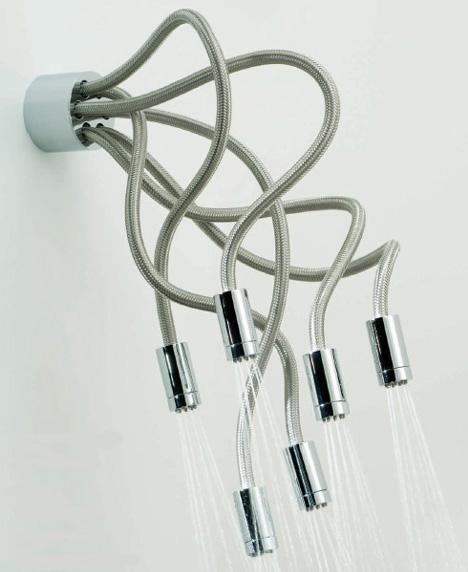
Instead of struggling to get that perfect angle, this alternative shower fixture lets you manipulate six different sprayers to achieve a perfectly relaxing clean.

Designed by Vado, each of the articulated metal armatures ends in a multi-spray spigot so no matter what way you twist or turn things you still get good coverage from the individual elements.

The result can be attached to wall or ceiling, and, of course, you could always add more than one for some serious shower-time fun.









